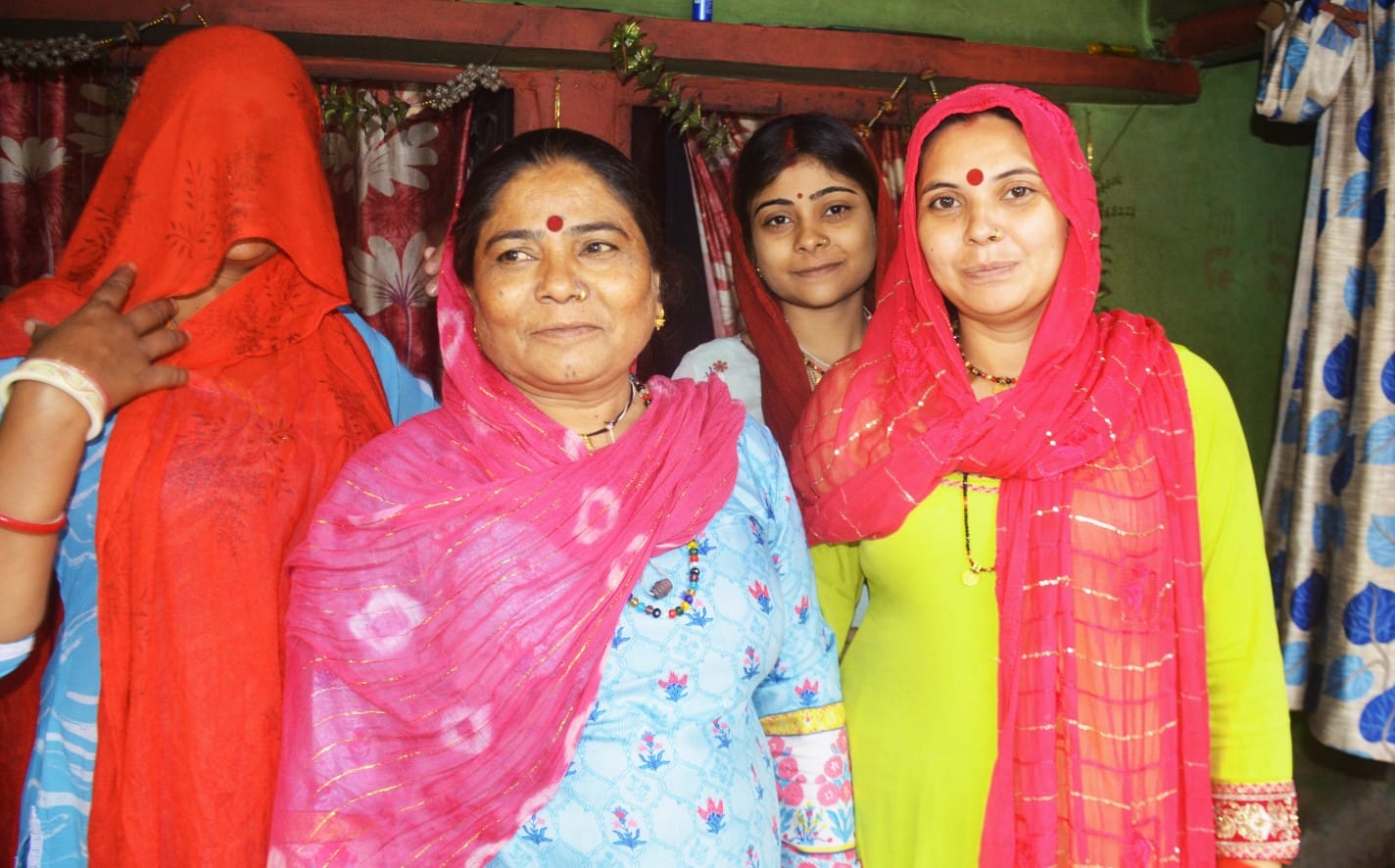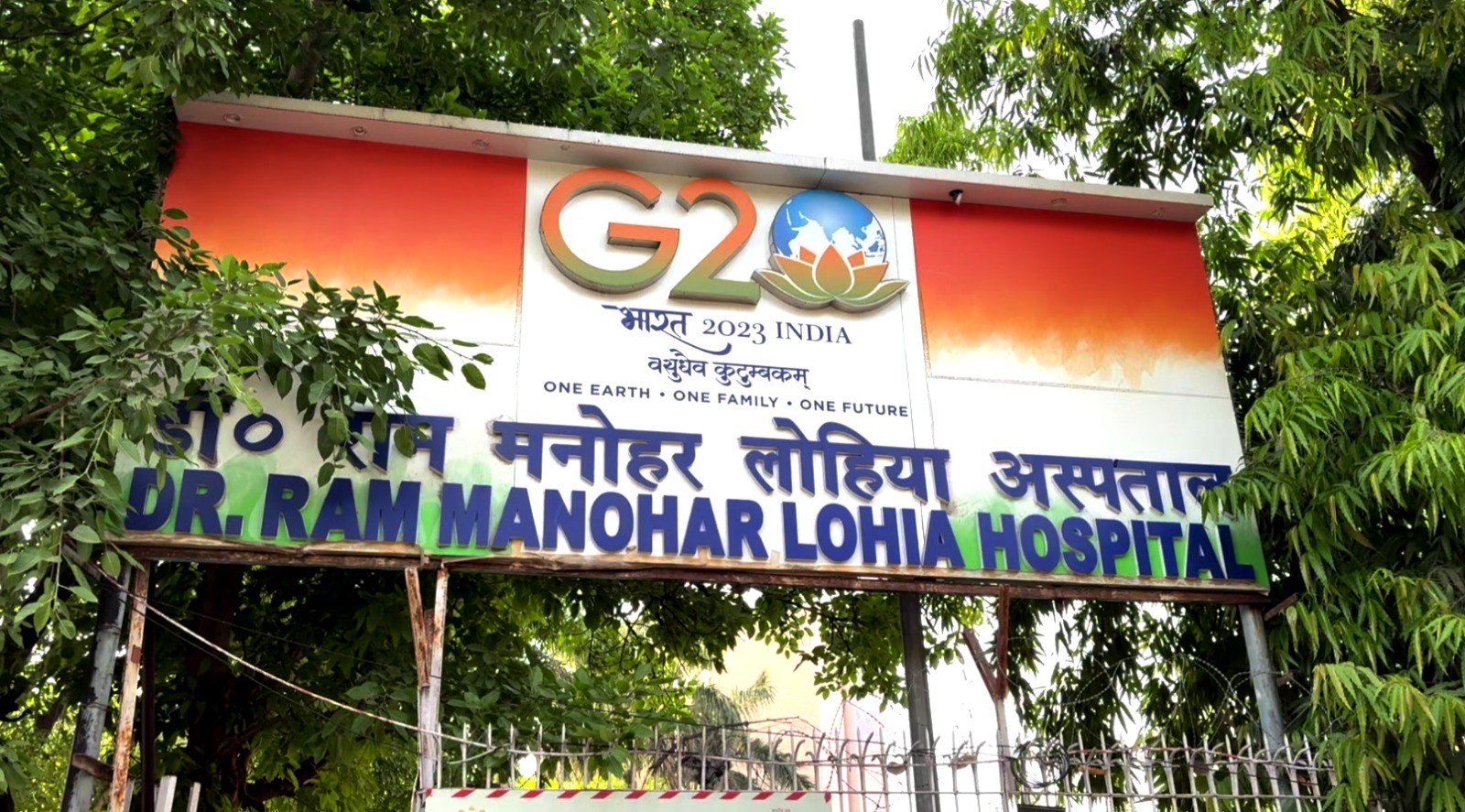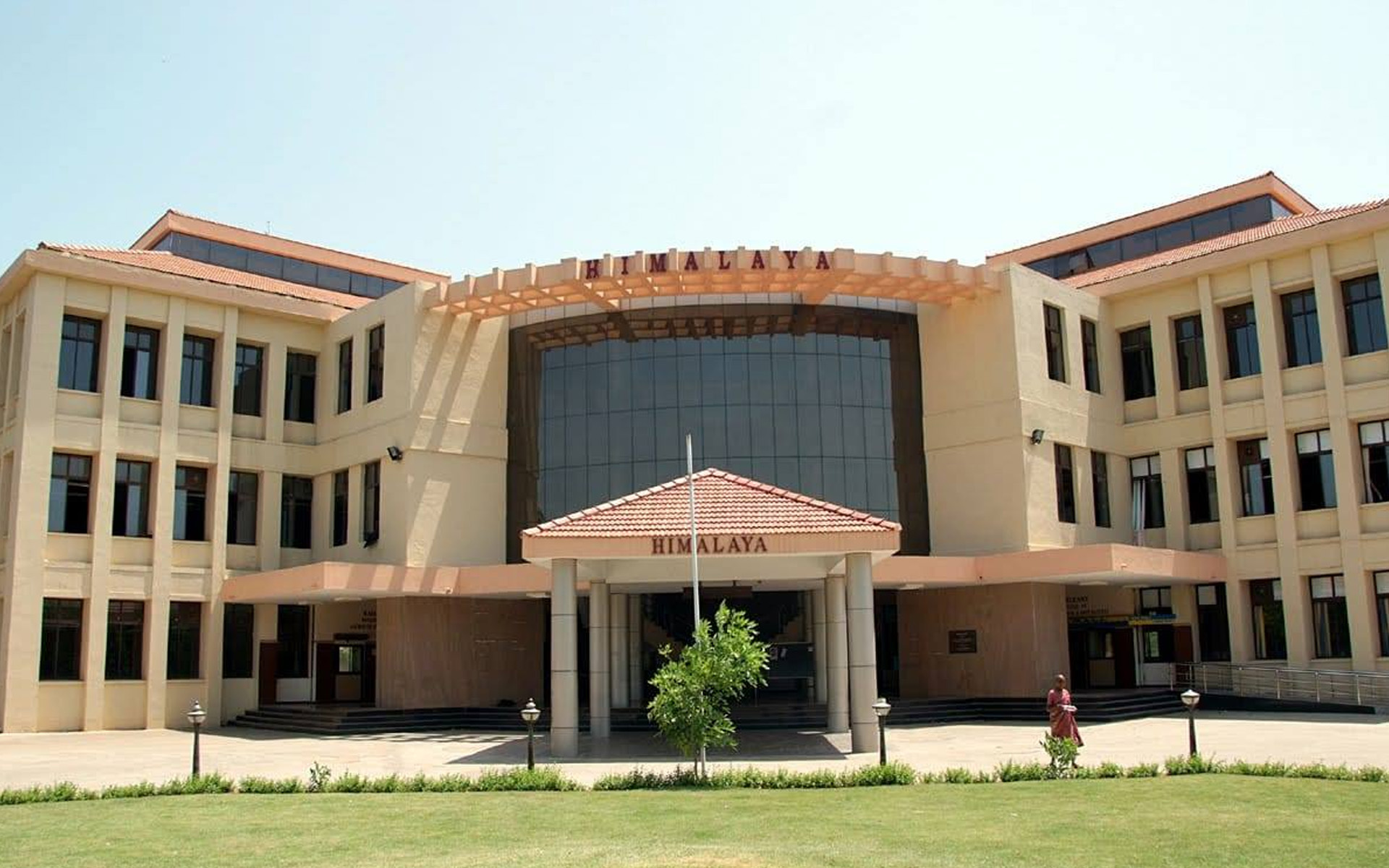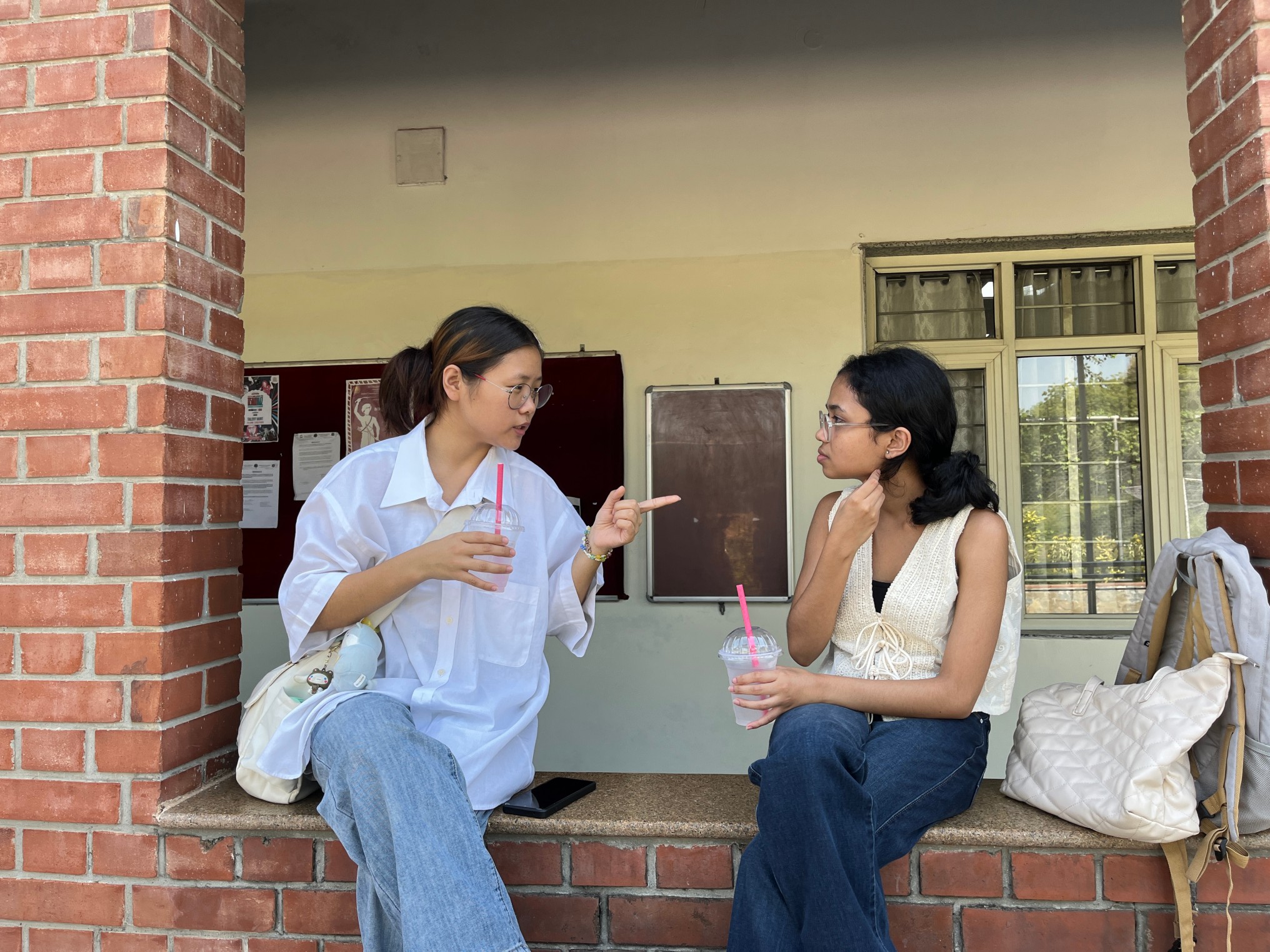Whether in Delhi or in Saharanpur, Bareilly, or Udaipur — along the dusty roadsides, women can be seen working shoulder to shoulder with men as iron craftsmen. Draped in traditional attire, serene and dignified, some adorned with jewellery, these women — embodying patience and grace — are the members of the Gadiya Lohar community.
For years, the flavours of modern life barely touched them. But now, under the sway of social media, winds of change are beginning to stir. Still, they prefer to keep the chaos of reckless progress at bay, choosing instead the familiar rhythms of their own community. Their only true connection with democracy lies in their right to vote. Beyond that, the government’s attitude towards their health and education remains steeped in indifference.
Life along the dusty roads
The Gadiya Lohars once roamed as nomadic wanderers in the areas surrounding the national capital, Delhi. Today, in the heart of India’s bustling capital, a forgotten community struggles on the fringes of urban life. Although they reside in Delhi or the National Capital Region (NCR), they do not directly benefit from any government schemes at either the central or state level. Despite possessing ration cards, Aadhaar cards, and voter IDs, the Gadiya Lohars remain excluded from various government schemes.
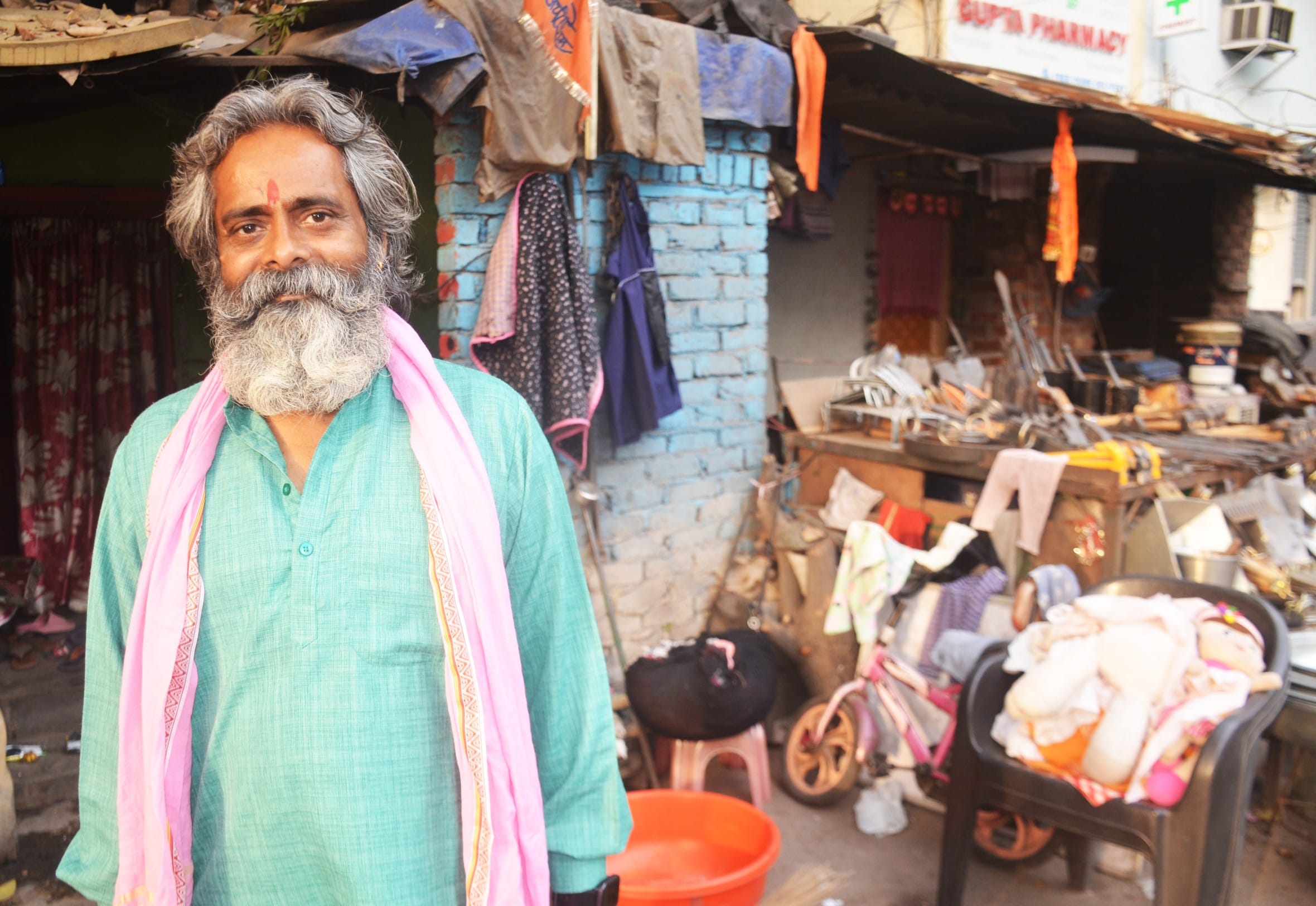
In Rajasthan, the Gadiya Lohars have been classified as a Highly Backward Class (HBC), whereas in Delhi, they are categorised among the Other Backward Classes (OBC). In Rajasthan, they are entitled to reservations in government employment; however, in Delhi, they have not benefited from any specific schemes.
Girls growing up in hardship in the Gadiya Lohar community
These traditional blacksmiths, who have lived for generations in temporary shelters along the roadside, primarily manufacture items such as skillets, cauldrons, tongs, spades, chisels, and hammers. Through this craft, they earn between ₹200 and ₹400 per day.
‘The risk of disease continues to rise due to pollution. The safety of young girls living on footpaths remains a serious and concerning issue—although we have remained safe so far, we do not know what the future holds,‘ says Nanhe Rathore from the JJ Camp in Prem Nagar. .
‘Since the community is patriarchal, women face significant health and nutrition-related challenges. They eat last within the family and tend to ignore minor health concerns. Their mobility is also contingent upon their husbands’ permission,’ says Sheela Lohar.
In this community, most girls are married at a young age. They drop out of government schools during adolescence and eventually marry within their own group. ‘Usually, they assist their husbands with ironwork,‘ says Prema, who lives near the Janakpuri Metro station. A young woman, requesting anonymity, states, ‘The new generation is somewhat prepared for education if they wish. However, my marriage was arranged as soon as I turned eighteen.‘
A young woman, requesting anonymity, states, ‘The new generation is somewhat prepared for education if they wish. However, my marriage was arranged as soon as I turned eighteen.‘
Rajveer Lohar from Palam proudly remarks regarding the safety of Gadiya Lohar women, ‘We do not worry about the safety of our daughters-in-law and daughters. We make iron tools, so antisocial elements avoid approaching us.’
Invisible to the government
The area near Sarai Rohilla Railway Station, characterised by luxurious residences and bustling markets, is home to approximately four hundred people whose lives remain largely invisible. They have no village of origin, and even if they were to return to Rajasthan, they would not know where to stay.
‘There are no bathing facilities or toilets at home; only a municipal toilet is available. Every time we use it, we must pay,‘ says Pawan Kumar Pradhan.
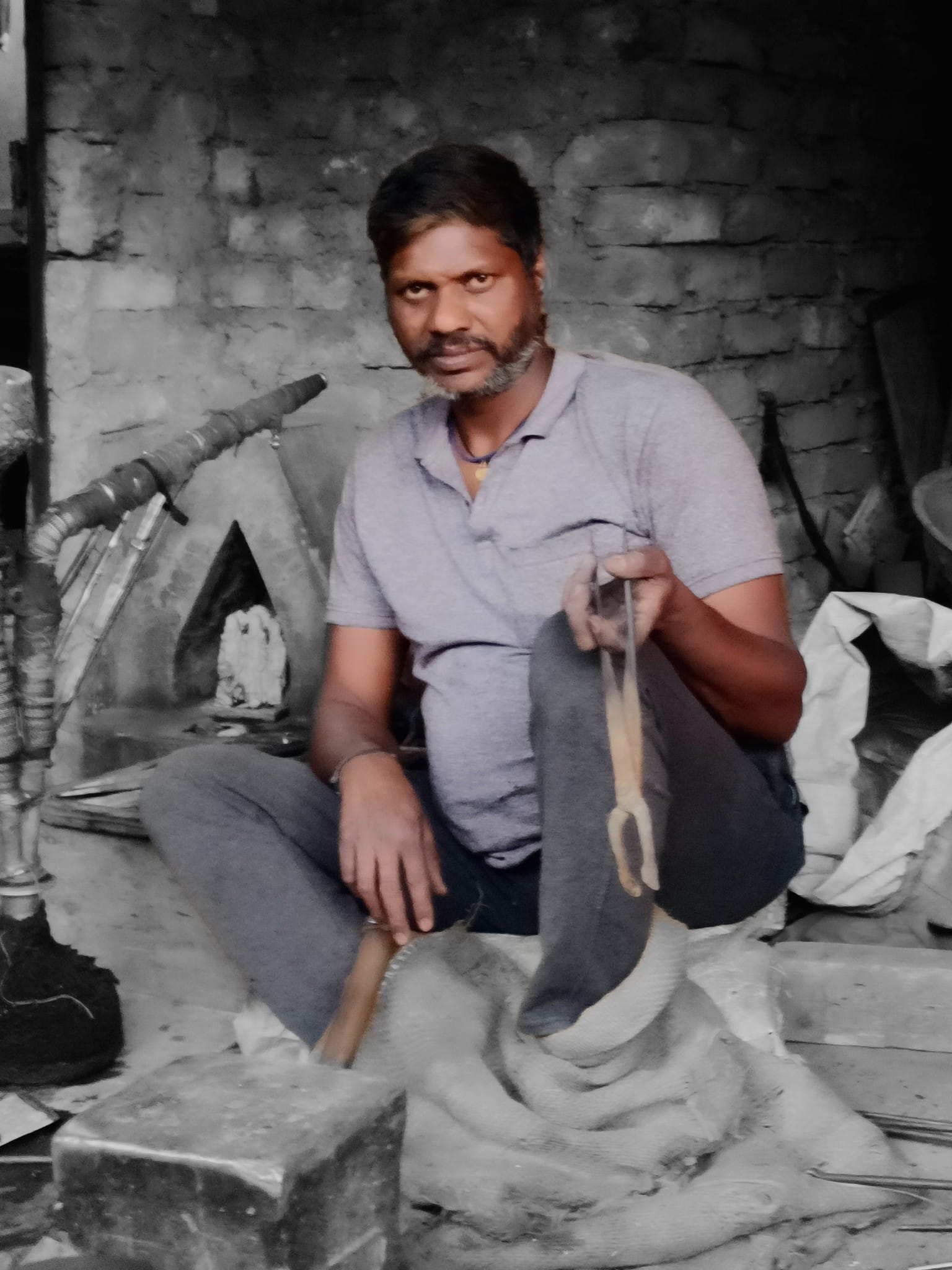
‘Five rupees per person for defecation, ten rupees for bathing, and twenty rupees for washing clothes,’ states Sunita Chauhan, a resident of the area. Speaking in a tone of complaint, she explains, ‘The municipal staff locks these facilities by 9:00 PM, forcing us to resort to open defecation. This situation becomes even more difficult for women.’
Adding to this, Shyam Lal Rathore states, ‘The Swachh Bharat Mission, which seeks to eliminate the compulsion of open defecation, has been neglected by the municipal corporation here.’
Several settlements, such as Kishanganj, lack government-subsidised ration shops, access to medical and health services, and public toilets. Additionally, waste disposal facilities are unavailable in these settlements.
‘Importantly, although purdah is practiced in this society, there is no gender discrimination. However, despite being considered urban residents, neither the state government nor the central government has taken any initiatives for the girls or young women here,‘ states Shakuntala Singh from Haujrani, whose family has been engaged in blacksmithing for generations.
The Ministry of Women and Child Development has no operational presence in their settlements. The lack of education, skill training, access to clean fuel and drinking water, health services, and reliance on shared toilets are major concerns for women in this community.
The lack of education, skill training, access to clean fuel and drinking water, health services, and reliance on shared toilets are major concerns for women in this community.
Kamla Rathore (27) from Jangpura, Pratigya Singh (24) from Adarsh Nagar, and Asha Lohar (19) from Azadpur endure intense physical labor assisting their husbands, often resulting in excessive menstrual bleeding. Following the demolition of the slums in Palam, Shobha (22) and Kamla (20) faced immense challenges during menstruation due to the lack of water for proper sanitation.
Struggles of the Gadiya Lohars for health and dignity
Devdas highlights the fifty-eight settlements across Delhi and its surrounding areas where the Gadiya Lohars reside. The largest settlement, located in Adarsh Gali, Palam, houses over one hundred households, whereas the smallest settlements, located in Rohini (Sector 24) and Kirti Nagar (Lakkad Mandi), consist of only five and seven houses, respectively. These areas are characterised by makeshift (kacha) homes.
Many Gadiya Lohars’ current addresses are either unregistered in government identification documents or reflect outdated locations due to the constant displacement they have endured. Such frequent relocation denies them access to vital government schemes and benefits, further marginalising their already vulnerable community.
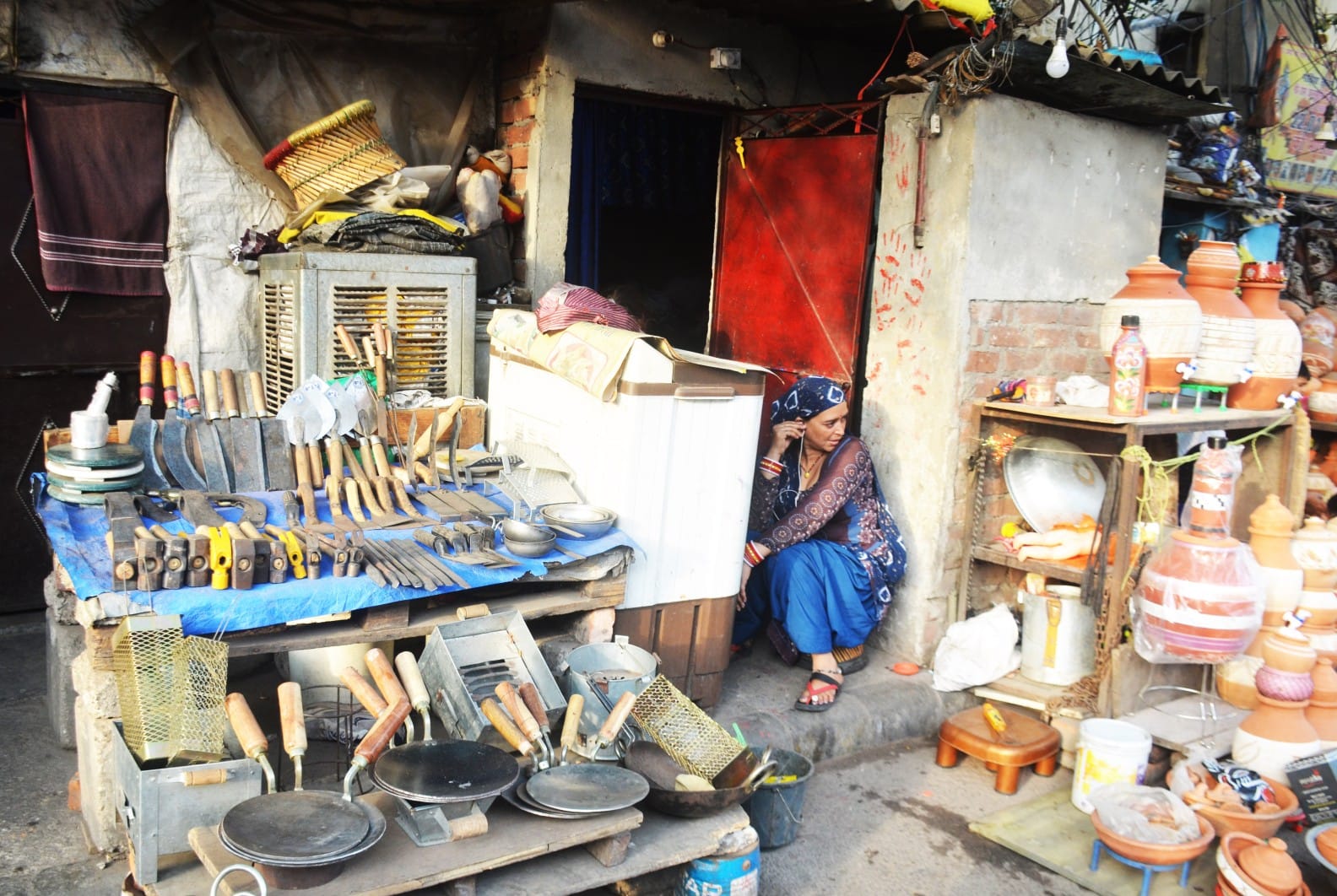
‘If our craft is our means of livelihood, then amidst the whirlwind of mall culture and online shopping, our products barely stand a chance in the market,’ states Ramesh, a resident of Sarai Rohilla. ‘Our centuries-old profession struggles to provide even two meals a day. Under such circumstances, the younger generation has turned to driving e-rickshaws as an alternative to iron craftsmanship—otherwise, we would starve,‘ he adds.
For generations, women from this community living in Delhi and its surrounding areas have maintained safe menstrual hygiene practices. However, it is not government campaigns that have influenced them, but rather the adoption of sanitary pads through television and social media. Nevertheless, they remain unaware of proper sanitary pad disposal methods.
Government-provided reproductive health services have not reached them. Services such as contraceptives, reproductive and infertility care, maternal and perinatal health, prevention and treatment of sexually transmitted infections (STIs), protection against sexual and gender-based violence, and education on safe and healthy lifestyles have not been initiated by either the Delhi government or the central government in their settlements.
In the Saraswati Vihar area, a settlement consisting of twenty slums housing eighty-two persons struggles with basic amenities. While the water supply is plentiful and two public toilets are available, essential infrastructure remains incomplete.
‘Thanks to the MLA’s fund, two toilets were constructed, but they still lack doors. Electricity is also absent,‘ shares Sanjay Lohar.
‘Thanks to the MLA’s fund, two toilets were constructed, but they still lack doors. Electricity is also absent,‘ shares Sanjay Lohar.
Kapil (32) and his wife, Pooja (27), are currently visiting Ambedkar Hospital near Rithala Metro Station regularly for Pooja’s treatment for kidney stones. Despite numerous prescribed tests, the hospital lacks the necessary facilities to conduct them. Shockingly, the entire Gadiya Lohar community has been excluded from the Ayushman Bharat scheme, even though the government promised in 2018 that ten crore BPL families (approximately fifty crore people) would benefit from it.
Seven years later, this community remains excluded. For pregnant women, access to both prenatal and postnatal care remains a struggle. They are often forced to rely on private clinics and costly hospitals, as government healthcare services are too complex to navigate. However, there is a glimmer of hope—a health worker from the Pitampura dispensary visits regularly to administer polio drops. However, for other essential vaccinations for newborns, the community must seek services independently.
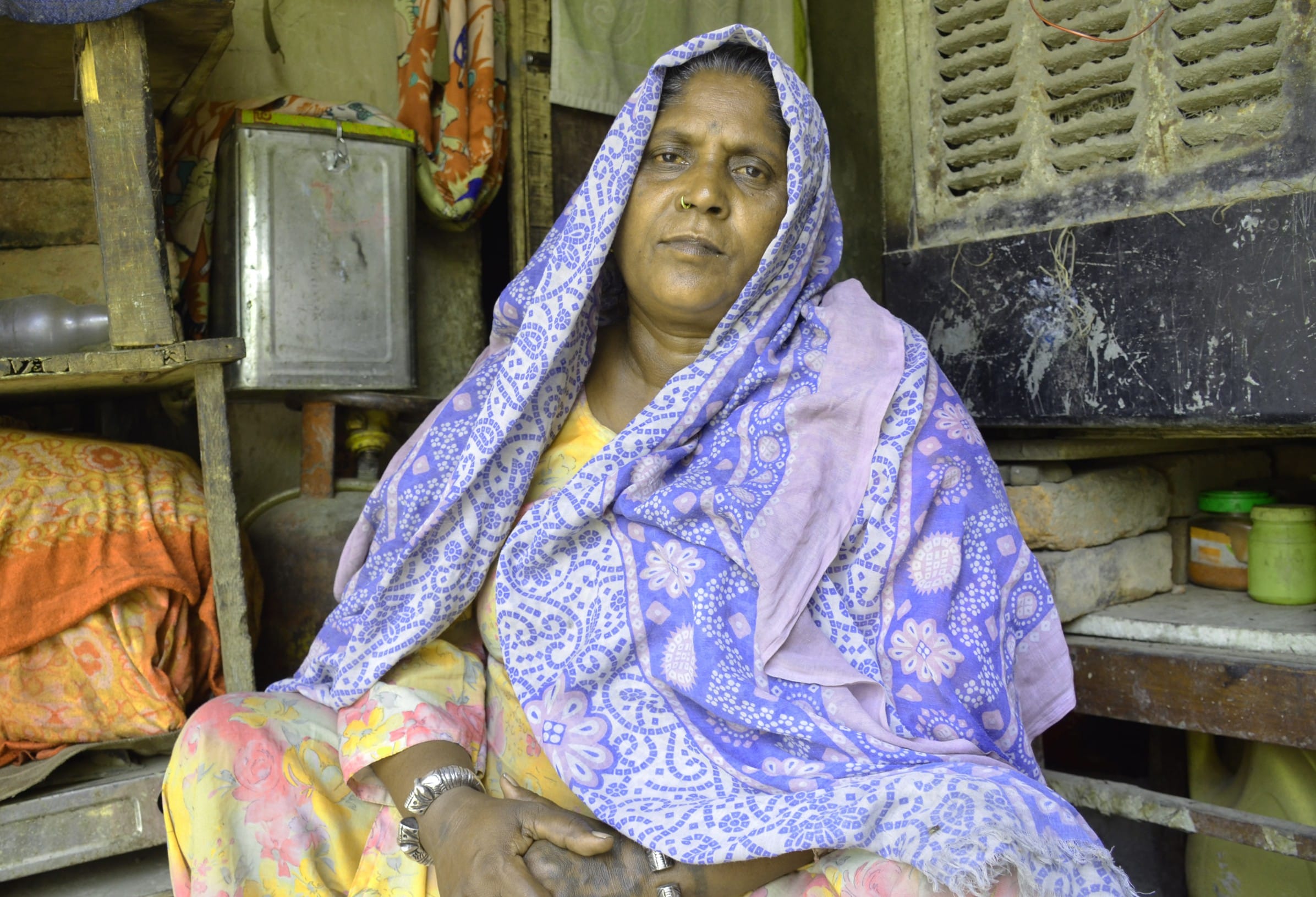
It is often assumed that the traditional attire and lifestyle of the Gadiya Lohars prevent them from seeking medical attention due to social taboos.
However, the women of the community confidently challenge this stereotype, providing clear and insightful responses to questions posed to them. Women such as Suman Rathore (30), who works at a private firm in Netaji Subhash Place, are emerging as role models by overcoming financial hardships and pursuing careers in private institutions.
Government schemes often appear as distant stars, rendered unattainable due to bureaucratic hurdles. Consequently, the responsibility of educating their daughters and ensuring their nourishment rests firmly on the shoulders of their parents, who manage it with remarkable dedication.
‘We may walk through the dust of the streets, but we remain healthy because our food is deeply rooted in tradition. For us, fast food is like poison,’ states Kiran, a voice that reflects the community’s deep awareness of health and lifestyle.
The Gadiya Lohars once led a nomadic existence, constantly on the move. Following independence, relief and rehabilitation programs, along with the introduction of subsidised grain, sugar, and kerosene through the Public Distribution System, brought a sense of stability to their lives. Their journey from Rajasthan to Delhi was marked by struggle and hardship; however, over time, they settled and made the city their home.
Their journey from Rajasthan to Delhi was marked by struggle and hardship; however, over time, they settled and made the city their home.
Historically, the ancestors of the Gadiya Lohars were part of Maharana Pratap’s army. After the Mughal conquest of Mewar, they vowed never to return home until Mewar and Chittorgarh were once again under the rule of Maharana Pratap. Since then, they have continued their journey, embodying a legacy of resilience and pride.
‘In the entire history of independent India, an examination of Delhi Police records will not reveal a single FIR against a Gadiya Lohar,’ asserts Shyamlal Rathore. ‘We endure oppression, yet we have never harmed either private or public property.’
A future of the Gadiya Lohar community beyond iron and dust
The Gadiya Lohars, who have lived in tune with the pulse of India’s society, now seek a new dawn of rehabilitation. They yearn for a brighter future for their children. While they may not wish to part with the familiar, earthy scent of the iron bellows, they long for freedom from the invisible chains that bind them between mere survival and being truly seen and recognised as human beings.
The Gadiya Lohars have moved beyond relying on ASHA workers or Anganwadi services. They have resolved that, in matters of health and well-being, they will carve their own path. What they seek now is not merely basic survival but quality education and skill development that will empower them to thrive. In an age dominated by technology, they recognise that their traditional craft, once the heart of their livelihood, must evolve to remain relevant.
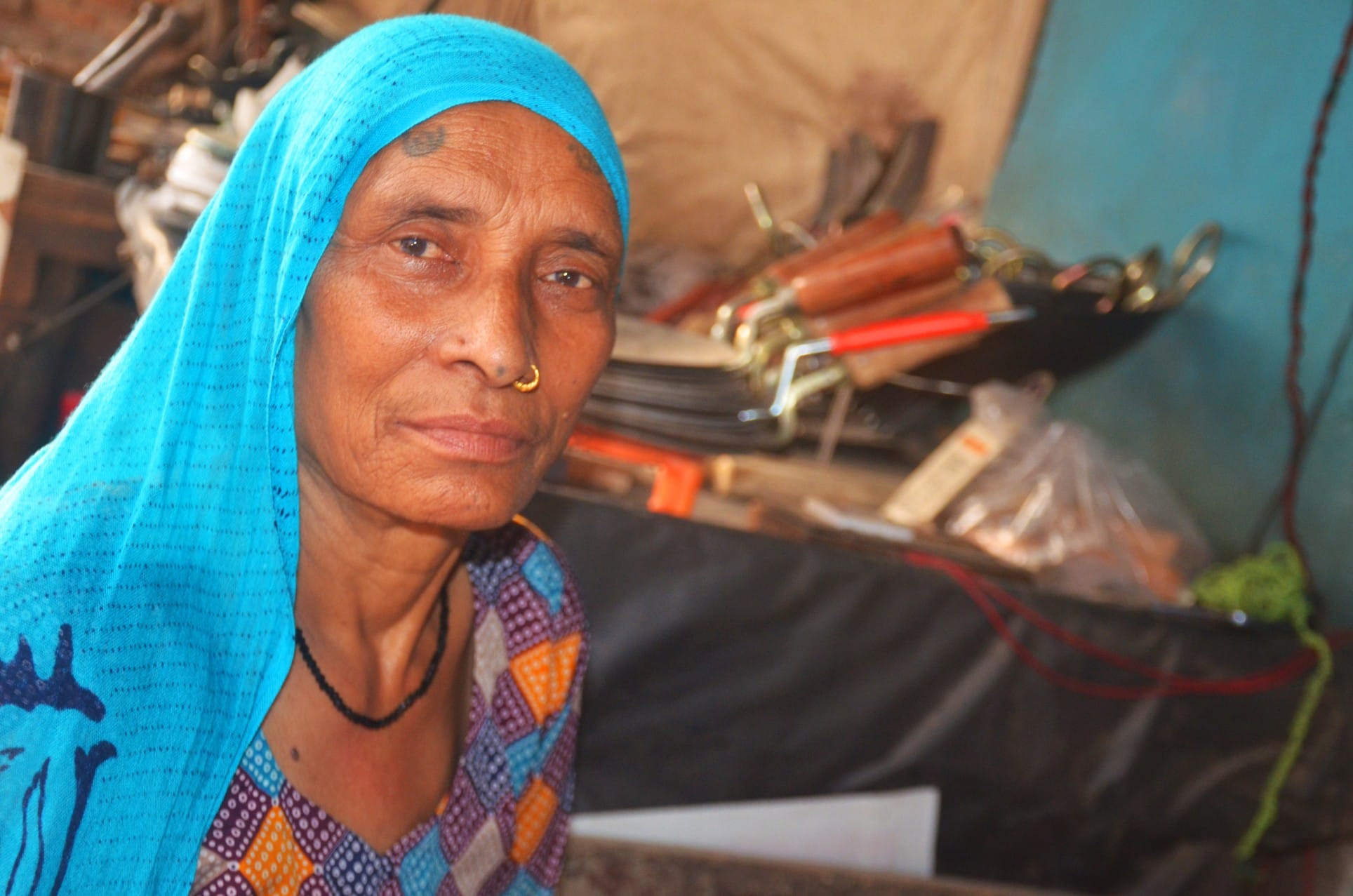
They are no longer bound by the past; they are determined to create a future in which they thrive on their own terms. As they look to the future, they pose a critical question: who will rise to lift them into the mainstream of health, education, and social acceptance?
This question is pivotal– what steps can finally break the endless cycle of struggle?
.
About the author(s)
Amarendra Kishore is an independent journalist residing in Delhi, whose work delves into the heart of public affairs. Through his narratives, he offers an exploration of social and gender dynamics, the rich yet challenging tapestry of rural life, and the stark realities of poverty. His journalism sheds light on the adversities faced by indigenous communities and eloquently advocates for the urgent need to reconnect natural resources with local lives.
